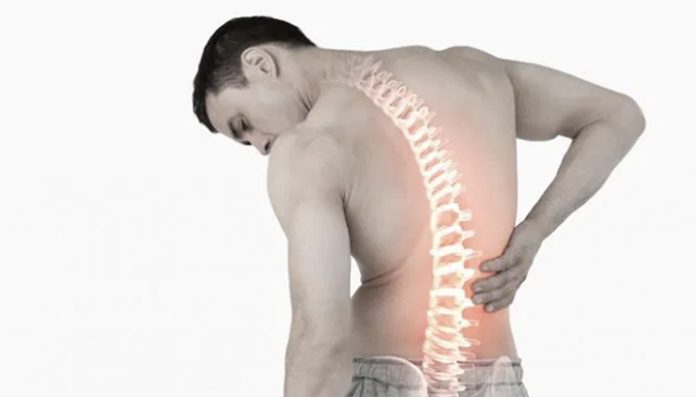It can result from injury, activity and some medical conditions. Back pain can affect people of any age, for different reasons. As people get older, the chance of developing Trusted Source lower back pain increases, due to factors such as previous occupation and degenerative disk disease.
Lower back pain may be linked to the bony lumbar spine, discs between the vertebrae, ligaments around the spine and discs, spinal cord and nerves, lower back muscles, abdominal and pelvic internal organs, and the skin around the lumbar area.
Pain in the upper back may be due to disorders of the aorta, tumors in the chest, and spine inflammation.
The human back is composed of a complex structure of muscles, ligaments, tendons, disks, and bones, which work together to support the body and enable us to move around.
The segments of the spine are cushioned with cartilage-like pads called disks.
Problems with any of these components can lead to back pain. In some cases of back pain, its cause remains unclear.
Damage can result from strain, medical conditions, and poor posture, among others.
Strain
Back pain commonly stems from strain, tension, or injury. Frequent causes of back pain are:
- strained muscles or ligaments
- a muscle spasm
- muscle tension
- damaged disks
- injuries, fractures, or falls
Activities that can lead to strains or spasms include:
- lifting something improperly
- lifting something that is too heavy
- making an abrupt and awkward movement
Structural problems
A number of structural problems may also result in back pain.
- Ruptured disks: Each vertebra in the spine is cushioned by disks. If the disk ruptures there will be more pressure on a nerve, resulting in back pain.
- Bulging disks: In much the same way as ruptured disks, a bulging disk can result in more pressure on a nerve.
- Sciatica: A sharp and shooting pain travels through the buttock and down the back of the leg, caused by a bulging or herniated disk pressing on a nerve.
- Arthritis: Osteoarthritis can cause problems with the joints in the hips, lower back, and other places. In some cases, the space around the spinal cord narrows. This is known as spinal stenosis.
- Abnormal curvature of the spine: If the spine curves in an unusual way, back pain can result. An example is scoliosis, in which the spine curves to the side.
- Osteoporosis: Bones, including the vertebrae of the spine, become brittle and porous, making compression fractures more likely.
- Kidney problems: Kidney stones or kidney infection can cause back pain.
Movement and posture
Back pain can also result from some everyday activities or poor posture.
Examples include:

- twisting
- coughing or sneezing
- muscle tension
- over-stretching
- bending awkwardly or for long periods
- pushing, pulling, lifting, or carrying something
- standing or sitting for long periods
- straining the neck forward, such as when driving or using a computer
- long driving sessions without a break, even when not hunched
- sleeping on a mattress that does not support the body and keep the spine straight
Other causes
Some medical conditions can lead to back pain.
- Cauda equina syndrome: The cauda equine is a bundle of spinal nerve roots that arise from the lower end of the spinal cord. Symptoms include a dull pain in the lower back and upper buttocks, as well as numbness in the buttocks, genitalia, and thighs. There are sometimes bowel and bladder function disturbances.
- Cancer of the spine: A tumor on the spine may press against a nerve, resulting in back pain.
- Infection of the spine: A fever and a tender, warm area on the back could be due to an infection of the spine.
- Other infections: Pelvic inflammatory disease, bladder, or kidney infections may also lead to back pain.
- Sleep disorders: Individuals with sleep disorders are more likely to experience back pain, compared with others.
- Shingles: An infection that can affect the nerves may lead to back pain. This depends on which nerves are affected.
The following factors are linked to a higher risk of developing low back pain:
- occupational activities
- pregnancy
- a sedentary lifestyle
- poor physical fitness
- older age
- obesity and excess weight
- smoking
- strenuous physical exercise or work, especially if done incorrectly
- genetic factors
- medical conditions, such as arthritis and cancer
Lower back pain also tends to be more common in women Trusted Source than in men, possibly due to hormonal factors. Stress, anxiety, and mood disorders have also been linked to back pain.
Source: www.medicalnewstoday.com









